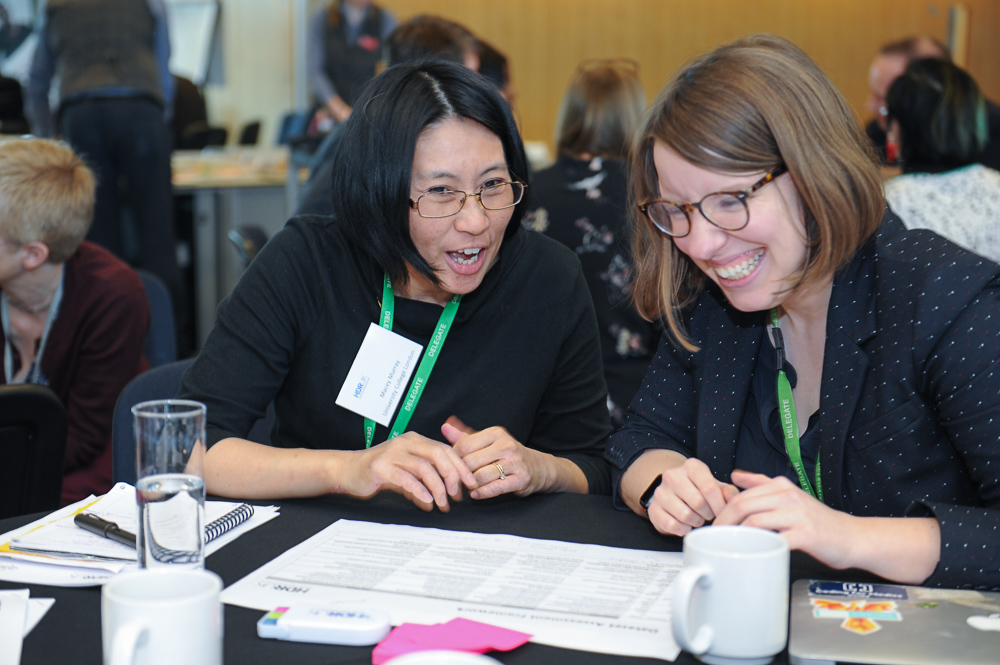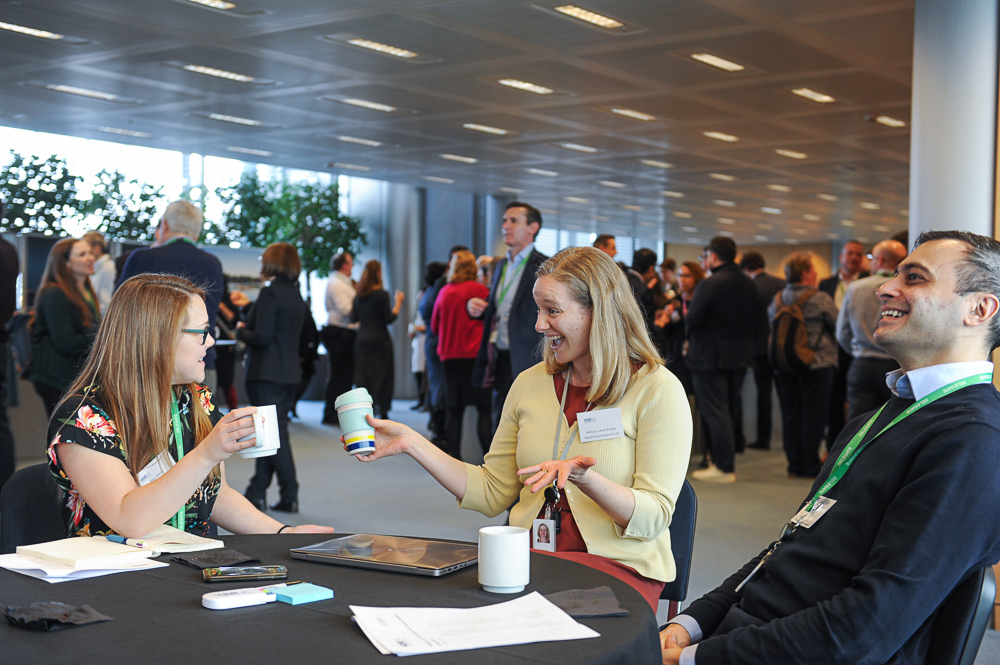Why Public and Patient Engagement and Involvement is so important to health data research - Jillian, Rosanna and Chris, HDR UK lay members
5 July 2021
Patient and public involvement and engagement (PPIE) is vital in the development of different areas of our work, including those where there is a level of uncertainty. Involving patients and members of the public will help us become a trusted voice on these complex issues and is key in helping build a system that is worthy of their trust and confidence in using health data for research.
We asked Jillian Hastings Ward (lay representative on the new Science and Infrastructure Delivery Group, which brings together the Improving and Uniting Delivery Group and the Using Data Delivery Group), Rosanna Fennessy (lay representative for the Gut Reaction Health Data Research Hub), and Chris Monk (lay representative on the Data and Connectivity Delivery Group) for their thoughts on PPIE in health data research.
In your opinion, why is PPIE so important to health data research?
Jillian:
“Researchers have the tools and analytical expertise, but patients and their families have the lived experience to put it all into context. Combining forces can help to identify research questions that will have the biggest impact on these patient communities, and to make new discoveries that may not have surfaced otherwise.”
Rosanna:
“The object of health data research is to improve patients’ lives and this is impossible without PPIE. Unless researchers engage and involve actual patients, how will they know what improvement really looks like? Health data research uses patient data, and patients should be involved in decisions about how and what it is used for. It is a basic courtesy that should be adhered to in all research. Patients graciously give permission for their data to be used and they should be afforded the opportunity to be involved in deciding on its application.”
Chris:
“PPIE is important in all research and should be informed by the people that it is based on and who it affects. When we’re looking specifically at people’s health data this is even more important because that data belongs to them. We can only, in the long term, use those assets for research if we have the consent of the asset owners i.e., Patients and the Public. To gain that consent we need to educate, inform, and transparently communicate what, why, how, where and by whom we are using data to improve patient and public health outcomes.”
Where has PPIE had an impact at HDR UK?
Jillian:
“Public contributors helped to shape the agenda for this year’s HDR UK Scientific Conference. We chaired several of the sessions, found lay speakers, and encouraged the scientific presenters to emphasise the real-world implications of their work.”
Rosanna:
“PPIE has helped HDRUK shape its priorities. Within the digital innovation hubs for example, PPIE has played a significant role from the initial inception of the hubs, through their development and their future sustainability. PPIE has helped inform the governance of the hubs, their strategic focus and their day-to-day activities and patients are at the heart of decision making about how their health data is used. Patients sit on steering groups and data access panels that make decisions about who does and does not get access to data.”
Chris:
“I’ve been particularly proud of the work that we have done on producing lay summaries of research projects, translating these from technical language into engaging summaries that hopefully interest and excite people and lead them to support the work that HDR UK does even further. We also had a fantastic response to our vaccine priority survey which we launched over Christmas and New Year earlier this year that saw over 800 people provide responses and input on a key policy area.”
What do you want to see in the future when it comes to involving patients and the public?
Jillian:
“I want every citizen to understand how health data can help solve the medical mysteries of our time, and I want HDR UK to carry on demonstrating what trustworthy uses of health data look like. I want more people to aspire to a career in health data science, and I want every health data scientist to go to work every day remembering that there is a real person behind each data point.”
Rosanna:
“In the future I would like to see patients and the public having greater involvement in setting the research questions and deciding on the infrastructure projects and implementation strategies for our future health services. HDR UK needs to continue to strengthen its focus on the appropriate use of health research that will improve the lives of patients by embedding them at the heart of its structure.”
Chris:
“It’s going really well at the moment, but we can always do more. Every time we have offered to become involved in a conversation it has felt like we are pushing at an open door and the teams working on the programmes have been keen to have PPIE involved. I would love to see us sharing best practice more widely to our partner organisations and also learning from them and continually working on improving our communication and engagement output. We are doing some really impressive and important work, let’s shout it from the rooftops, but do so in a way the public cannot just understand but empathise with and be excited by.”
If you would like to learn about how to get involved with our work at HDR UK, please visit our opportunities page and sign up to HDR UK Voices.



